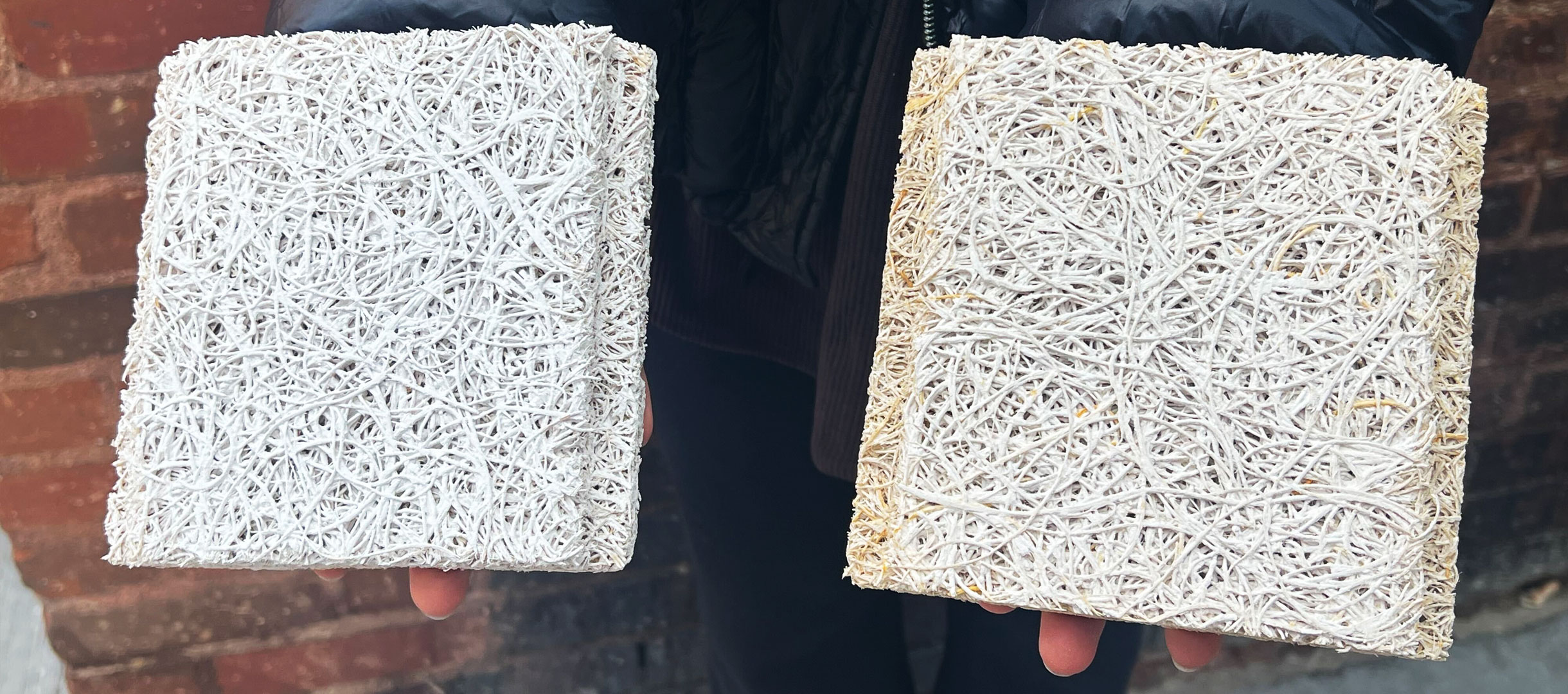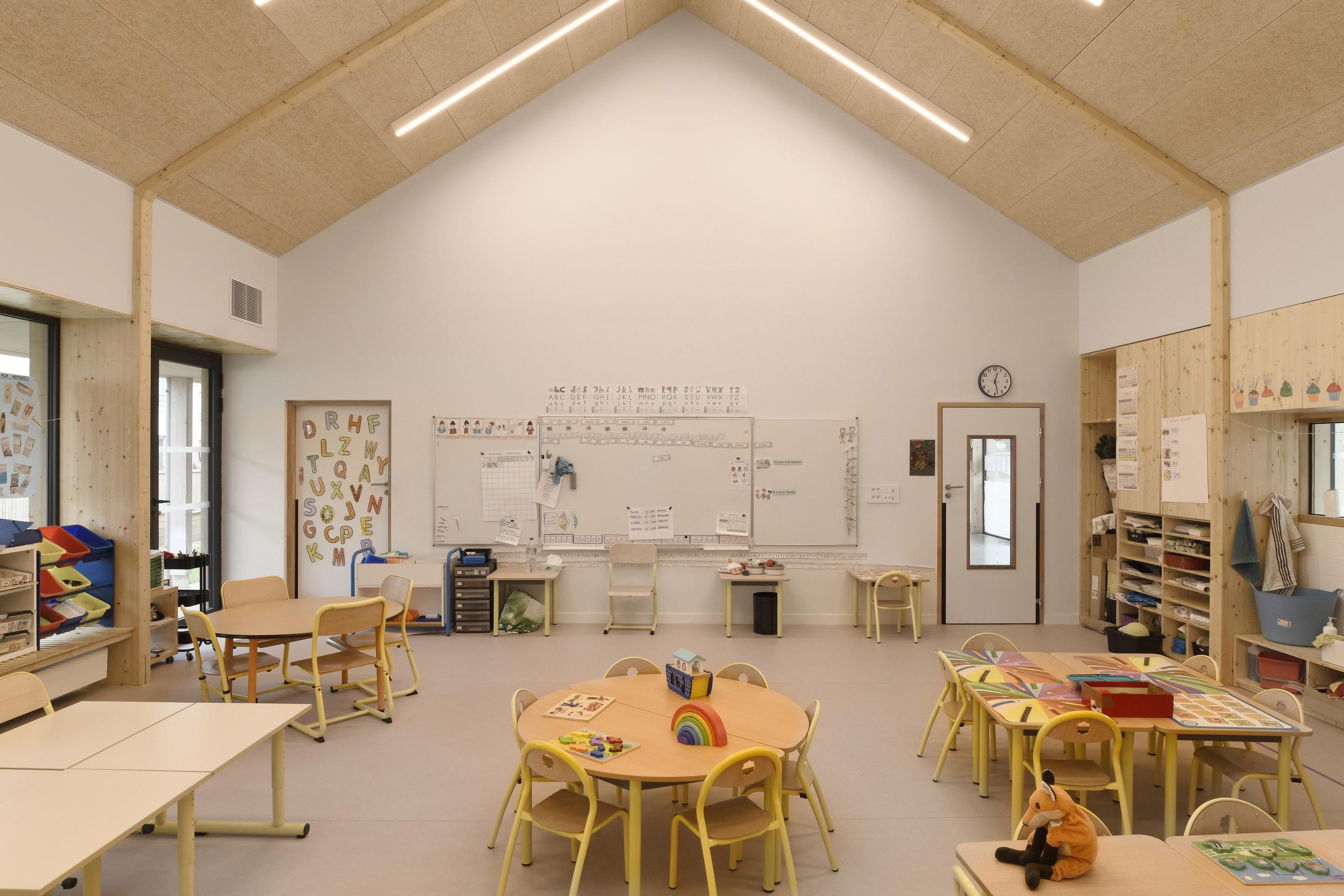Sound, Sustainability, and Style: The Case for Wood Wool
2025.10.07

When architects and educators think about improving learning environments, acoustic performance, durability, and aesthetics often top the list. One material that brings all three together is wood wool—a product that is gaining momentum in schools, universities, and other public facilities.
What is Wood Wool?
Wood wool panels are made from mineralized wood fibers bound together with cement. Unlike smooth gypsum or synthetic acoustic products, wood wool is immediately recognizable: visible strands create a natural, tactile texture that feels both warm and modern. The material comes in many forms—wall panels, ceiling tiles, suspended baffles, or free-hanging “clouds”—with different thicknesses and finishes tailored to project needs.
A common misconception is that wood wool is a soft fiberboard, but it is far from fragile. The cement binder makes it significantly more durable and fire-resistant than standard acoustic panels, bridging the gap between performance and resilience.

Visible strands create a natural, tactile texture that feels both warm and modern
Design and Delivery Advantages
Wood wool’s versatility makes it attractive to both designers and contractors. It can be directly attached to walls and ceilings or suspended in grid systems, making it ideal for both retrofits and new construction. Prefinished options save time and labor on-site, while a growing number of stocked products means some panels are available with quick lead times.
From a design perspective, wood wool offers a wide palette. Panels can be specified in natural tones, custom colors, and modular patterns, turning acoustic treatments into wayfinding tools or brand expressions. Maintenance is also simple: unlike fabric-wrapped panels that tear or stain, wood wool has a hard, washable surface that holds up in high-traffic areas.

Panels can be specified in natural tones, custom colors, and modular patterns, turning acoustic treatments into wayfinding tools or brand expressions
Performance and Usage in Schools
The acoustic benefits are substantial. Depending on thickness and installation method, wood wool achieves NRC ratings between 0.40 and 0.85—enough to reduce reverberation times and meet ANSI/ASA S12.60 classroom standards. This directly supports classroom acoustics, a key factor in improving student learning performance.
Reflecting its proven performance, the New York City School Construction Authority (SCA) has recently added wood wool to its list of approved interior finishes for classrooms—an important milestone that signals growing adoption within the largest public school district in the United States.
Durability is another strength. Impact-resistant panels can withstand the daily wear of gyms, cafeterias, corridors, and multipurpose rooms. Many manufacturers also offer Class A fire-rated panels and low-VOC finishes, aligning with health and safety priorities in education. Typical school installations range from early childhood classrooms and music rooms to libraries, lecture halls, and athletic facilities.
Growing Popularity
Several factors are driving broader adoption of wood wool in the U.S. market. Sustainability credentials are strong, with Environmental Product Declarations (EPDs) and FSC-certified wood content common across product lines. The material contributes to LEED, WELL, and other green building certifications, particularly under acoustics and materials credits.
At the same time, educators and designers are moving away from sterile, institutional finishes. Schools and universities are looking for warmer, more human-centered spaces, and wood wool delivers both texture and performance.

Schools and universities are looking for warmer, more human-centered spaces, and wood wool delivers both texture and performance
Why We Like It
For us, wood wool represents the rare material that delivers on multiple fronts: acoustic control, durability, fire safety, and visual warmth. It reduces waste through prefinished, long-life panels that can eventually be recycled. And it aligns perfectly with biophilic and human-centered design goals in education, helping to create environments that support learning and well-being while meeting ambitious sustainability standards.
Wood wool isn’t just another acoustic product. It’s a material that makes schools feel better, sound better, and last longer, and we're excited to use it in several of our upcoming educational projects!
Image credits above: Guillaume Amat © 2025
It aligns perfectly with biophilic and human-centered design goals in education


